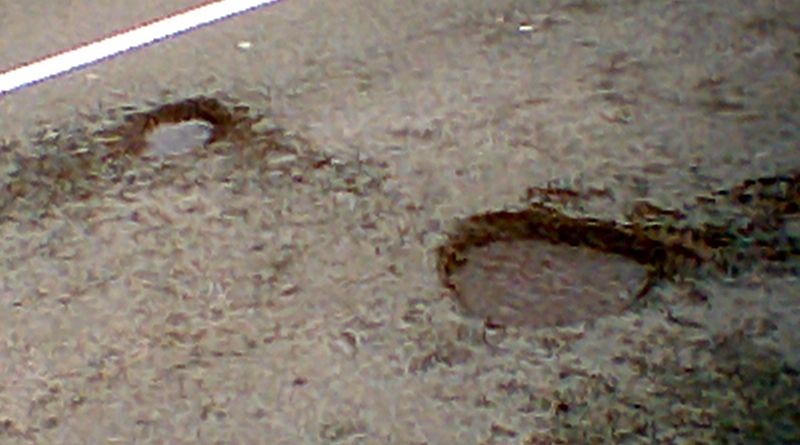The extreme cold followed by a significant warming trend has paved the way for potholes, another expense for drivers during a winter that has already been costly for many of them.
“First, AAA Roadside Assistance crews responded to thousands of calls from members with dead batteries and now, it’s the tires,” says Ken Grant, manager of Public and Government Affairs for AAA Mid-Atlantic. “Damage from potholes is not just an inconvenience. It can be a significant expense.”
Previous research from AAA indicates that American drivers spend $3 billion annually, an average of $300 per motorist, repairing pothole-related damage.
“We saw a vehicle over the weekend so severely damaged by a pothole, that not only flattened the tire, but the whole wheel came off,” said Barry Cooperman, Car Care Manager of the AAA Car Care Center in South Philadelphia. “This is just the beginning of pothole season, so we expect to see many more tire-related issues in the weeks and months ahead.”
In some cases, the impact of poor road conditions on vehicles can leave a car owner with repair bills ranging from under $250 to more than $1000 depending on the extent of the damage, the make of the vehicle and the make of the tires.
Typically, potholes form when moisture collects in small holes and cracks in the road surface. As temperatures rise and fall, the moisture expands and contracts due to freezing and thawing. This breaks up the pavement and, combined with the weight of passing cars, eventually results in the formation of potholes.
Blown tires, dented rims, damaged wheels, dislodged wheel weights, displaced struts, dislocated shock absorbers, and damaged exhaust systems are all are costly common automotive issues caused by pothole run‐ins. Other telltale signs include misaligned steering systems, and ruptured ball joints.
“Flat tire calls account for a significant number of roadside assistance requests by AAA members,” said Grant. “With many of these calls related to pothole damage, it is important for motorists to be proactive and have their vehicle inspected if they suspect vehicle damage.”
To aid motorists in protecting their vehicles from pothole damage, AAA recommends the following:
Inspect Tires – The tire is the most important cushion between a car and a pothole. Make sure tires have enough tread and are properly inflated. To check the tread depth, insert a quarter into the tread groove with Washington’s head upside down. The tread should cover part of Washington’s head. If it doesn’t, then it’s time to start shopping for new tires. When checking tire pressures, ensure they are inflated to the manufacturer’s recommended levels, which can be found in the owner’s manual or on a sticker on the driver’s door jamb. Do not use the pressure levels stamped on the sidewall of the tire.
Look Ahead – Make a point of checking the road ahead for potholes. An alert driver may have time to avoid potholes, so it’s important to stay focused on the road and not any distractions inside or outside the vehicle. Before swerving to avoid a pothole, check surrounding traffic to ensure this will not cause a collision or endanger nearby pedestrians or cyclists.
Slow Down – If a pothole cannot be avoided, reduce speed safely being sure to check the rearview mirror before any abrupt braking. Hitting a pothole at higher speeds greatly increases the chance of damage to tires, wheels and suspension components.
Beware of Puddles – A puddle of water can disguise a deep pothole. Use care when driving through puddles and treat them as though they may be hiding potholes.
Check Alignment – Hitting a pothole can knock a car’s wheels out of alignment and affect the steering. If a vehicle pulls to the left or right, have the wheel alignment checked by a qualified technician.
Recognize Noises/Vibrations – A hard pothole impact can dislodge wheel weights, damage a tire or wheel, and bend or even break suspension components. Any new or unusual noises or vibrations that appear after hitting a pothole should be inspected immediately by a certified technician.
Report a pothole: Motorists are encouraged to report potholes. In Delaware, motorists can report a pothole by contacting the DelDOT Transportation Management Center (operating 24/7/365) at 302-659-4600, #77 on your cell, or through e-mail at [email protected].
For more on how to prevent serious vehicle damage from potholes, motorists can visit AAA.com.
Source: AAA Mid-Atlantic

